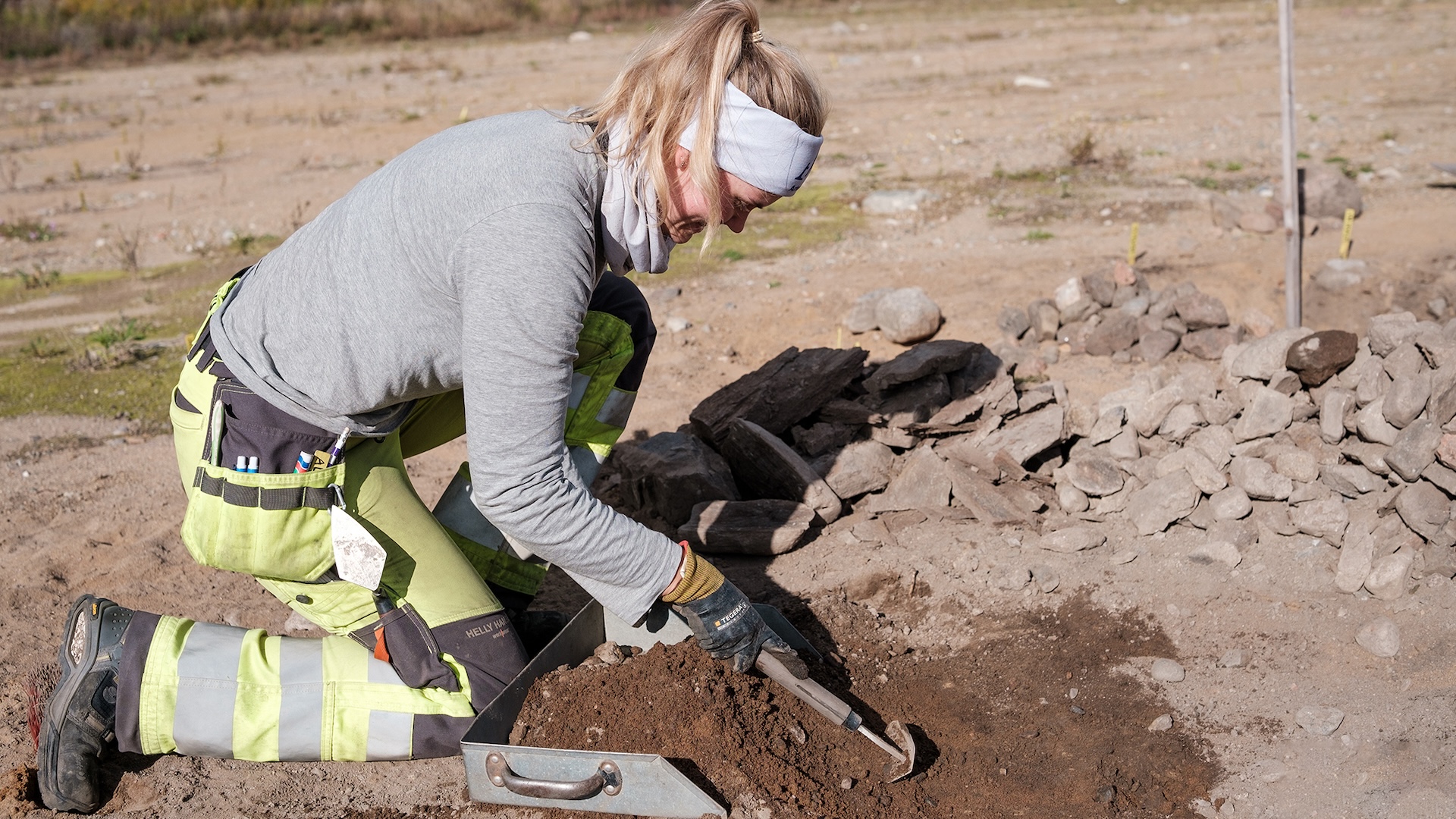
Archaeologists in Sweden have discovered an ancient iron pocketknife jabbed into the burial of an Iron Age woman. The cemetery, which dates to between 500 B.C. and 400 A.D., contained at least 50 burials, but this one was particularly unusual.
The people who buried the woman centuries ago "stuck the knife in; we don't know why, but it is clear that it is meant for the woman," Moa Gillberg, an archaeologist at Sweden's National Historical Museums, said in a translated statement.
The burial ground was uncovered in the southern Swedish borough of Pryssgården, about 105 miles (169 kilometers) southwest of Stockholm. Archaeologists were clued into its presence by a late-17th-century text written by the Swedish priest Ericus Hemengius, who was tasked with cataloging ancient cemeteries within his parish. But they were unsure if any of the graves survived into the 21st century.
During their preliminary investigations this past spring, archaeologists with the National Historical Museums found some jewelry with metal detectors. And while excavating, they identified ancient dwellings, a storehouse and a well, in addition to dozens of graves.
Most of the graves were pits where cremated remains were placed — a common burial rite in the Iron Age — but some were covered by small, symmetrically laid stones.
Related: Early-medieval woman was buried with a rare item: a metal folding chair
In one particular grave, there was a thick, burnt layer containing ashes and bone pieces.

"When we dug down, we saw that they had put an iron folding knife straight into the ground," Gillberg said. In addition to the knife, archaeologists discovered a small needle in the woman's grave.
The well-preserved knife may have been used for leather preparation, Gillberg said, but its presence and unusual position in the grave are not understood.
Knives were utilitarian objects in that time period; they were useful for preparing food or making clothing, and they may have been used for self-defense. Other examples of women's graves with knives and needles from the late Iron Age and early Viking Age (A.D. 793 to 1066) have been found in southern Sweden.
Further work at the Pryssgården site is planned. One pit that the archaeologists thought was a grave was actually a large posthole — evidence that some sort of wood structure existed there.
"We want to see if we can find more such pits," Gillberg said. "Sometimes you build monuments on the funeral pyre, so maybe this was one of those."







